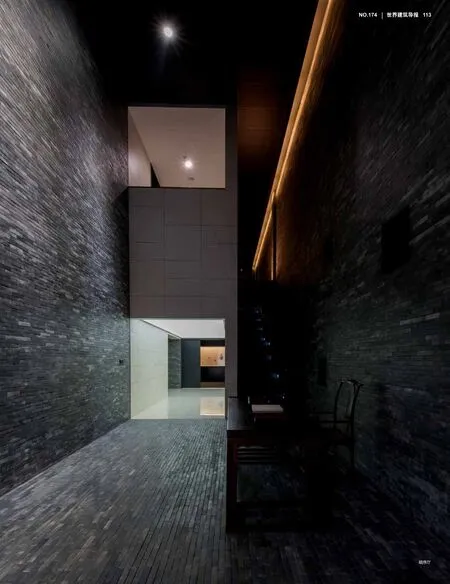一二美术馆
2017-06-05韦志远,吴凤辉,桑文等
一二美术馆
The “One or Two” Art Gallery
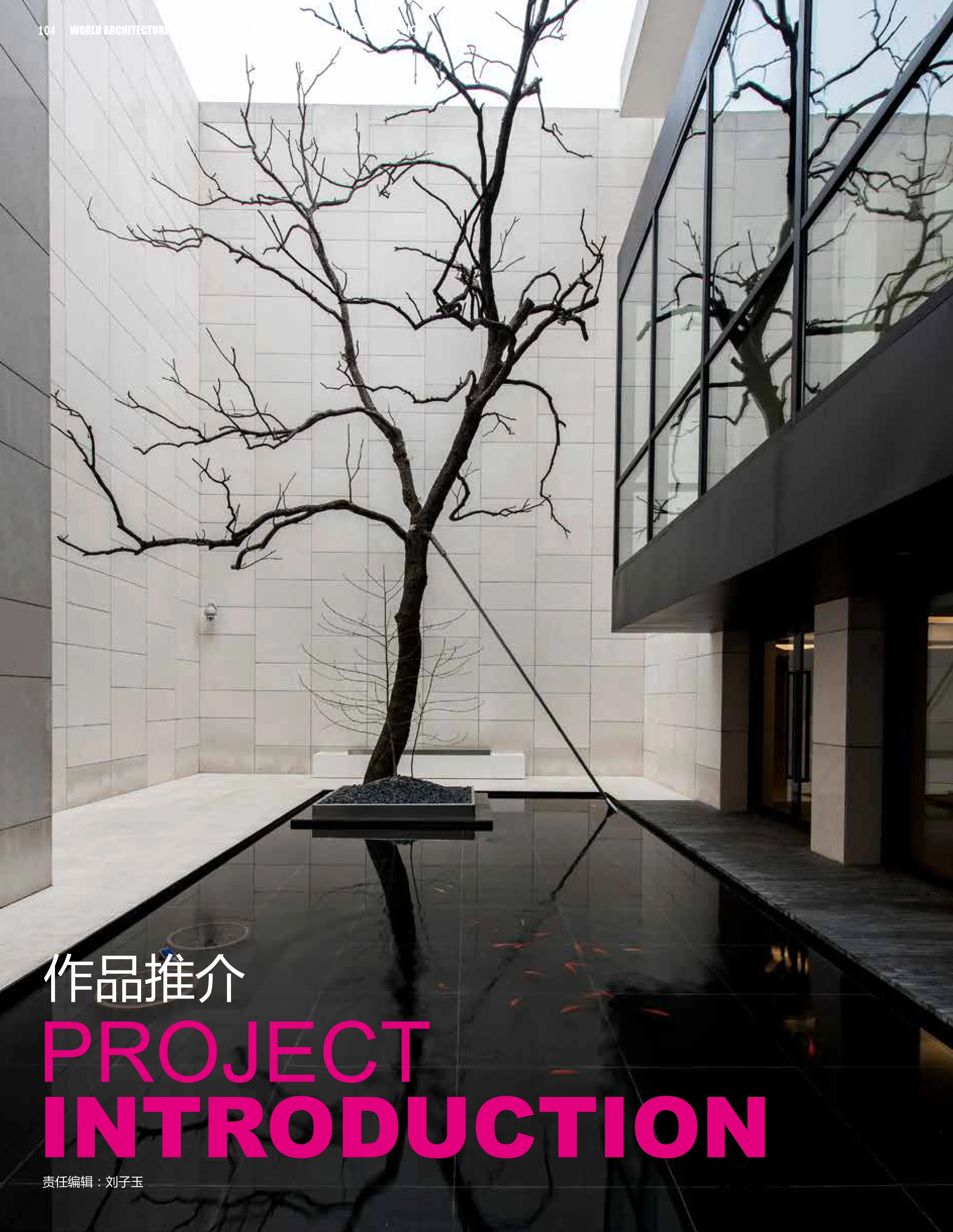
项目名称: 湖北宜昌一二美术馆主馆
地理位置:湖北宜昌伍家岗区
设计单位:深圳市道普建筑设计有限公司
建筑面积:1150m2
建 筑 师:韦志远、吴凤辉、桑文、赖少艳
建筑摄影:周硕斌
设计时间:2014年4月
竣工时间:2016年6月
创作历程
一二美术馆位于湖北宜昌伍家岗区,是宜昌首个私立美术馆,馆内藏有许多具有重要历史价值的文物、名人名家书画以及印章。
在对美术馆的初步方案创作过程中,与馆主的精神交流,成为了参与创作的建筑设计师们独特的经历。
Project Name :The main hall of the “one or two” art gallery in Yichang, Hubei province
Project location : Wujiagang district of Yichang, Hubei province
Design firm :Shenzhen TOP architecture design Co.Limited.
Area :1150 square meters
Design team :Zhiyuan Wei/Fenghui Wu/Wen Sang/ Shaoyan Lai
Photographer :Shuobin Zhou
Design time :2014.4
Completion time: 2016. 6
Process of design
The “one or two” art gallery is located in the Wujiagang district of Yichang, Hubei province, it’s the frst private art gallery in Yichang and there are many cultural relics with important historical value and lots of celebrity calligraphy, paintings and seals.
At the inception phase of design, some intellectual communication with the owner of the gallery made this program very peculiar.
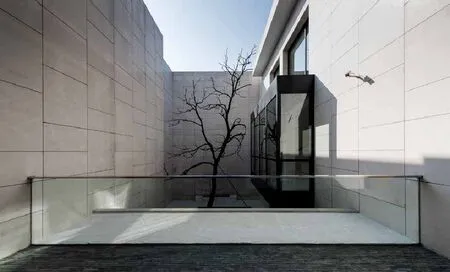
入口平台
“由于高强度的工作压力和快节奏的生活,使得我本身性格偏于浮躁”设计师坦言。
“但馆主的性格却安静、寡言且泰然,他的阅历使得他拥有独特的处事原则。出于基础的礼节,我们会遵从他的节奏来进行对设计的交流。但很快我就发现,往往只是同馆主坐下品一品茶,聊几句天,如此度过一个小时,就可收获从前需要花费半天至一天时间才可达成的默契,对我来说这是一种收获。”
也正因如此,设计师的效率也通过这种以慢为快的方式提升了。
通过不断感悟,方案团队决定以中国最本源的道家思想作为设计指导,但与此同时也带来了更大的问题:仅有1000平米的美术馆,要怎样诠释道家“天、地、人”这样大的概念?它又是否承载得起这样的概念?这些问题在创作过程中,都曾让设计师们反复担忧。
老子《道德经》有云:“万物之始,大道至简,衍化至繁”。如今人们对于思想的解读,往往都是复杂而个体化的,很多人也容易迷失在这种解读之中而偏离最简单的本质。在尝试过以复杂而隐晦的建筑语言去演绎道家思想之后,设计师们又经过了反复的探索,最终他们说服自己:不再去过多进行额外的诠释,而是以最自然、最愚直的方式,把道学原理直译成空间语言,交给使用它的人来解读。最终,按照这种以拙代巧的设计方式所完成的美术馆空间,让之前的担忧都显得片面而肤浅,因为当置身其中时,他们惊喜地发现,正是由于对道家思想的直译,这座美术馆的每一个空间甚至可以承载多重立意而互不矛盾。同一个空间根据观赏者不同的选择,亦能得到不同的感受,而这种“似是而非”的体验感,也正好印证了老子所说的那句:道可道,非常道。
于是,随着心之所向,设计人、建筑、观赏者最终都得以自在,这就是最好的结果。
“The high pressure from work and the fast-pace life make me sometimes impatient.” said the chief architect. “But the owner of the gallery is a quiet, unassuming man, what he experienced gave him the unique personality. Because of the respect, we followed his pace to communicate the scheme, and soon we found that, most of the time we just sat down and tasted some tea for about an hour, then we got more understanding, while this kind of situation will cost us more than half a day in usual. That was really a special experience and gain for me. This is a way which seems slow but can make things develop fast , and in this way , the efciency of design was promoted . "
Through the apperception about the project, the creative team decided to be guided by the Taoism, which is the most indigenous Chinese ideology. But it also brought other problems: How could a gallery express the Taoism? How could a limited space carry the conception of "universe, world and human"? These problems did confuse architects a lot during the process of creation.
The “Tao Te Ching" said:" From the origin of the universe, the way which can achieve great deed is the simplest, while the derivative ways are always tedious."People now unscramble the ancient ideas often make it complicated and one-sided, most people lost themselves while unscrambling and deviate far from the truth. After several tedious ways had been tried, the architects fnally convinced themselves that there was no need to unscramble more, what they need to do is to translate the Taoism into space language in the simplest and straightest way, people who come into the gallery will have their own reading about the space. At last, after the gallery was build up, the architects found that just because of the straight and simple way they used in design, every space of this gallery can express more than one meaning. According to different choices of different visitors, they will get different feelings, and the uncertain feelings from space just comes from the Taoism which said: “The Tao that can be told is not the eternal Tao”
Following the choice of heart, the architects, the gallery and the visitors set themselves free in the end, and this should be the best result.

美术馆(主馆)入口广场
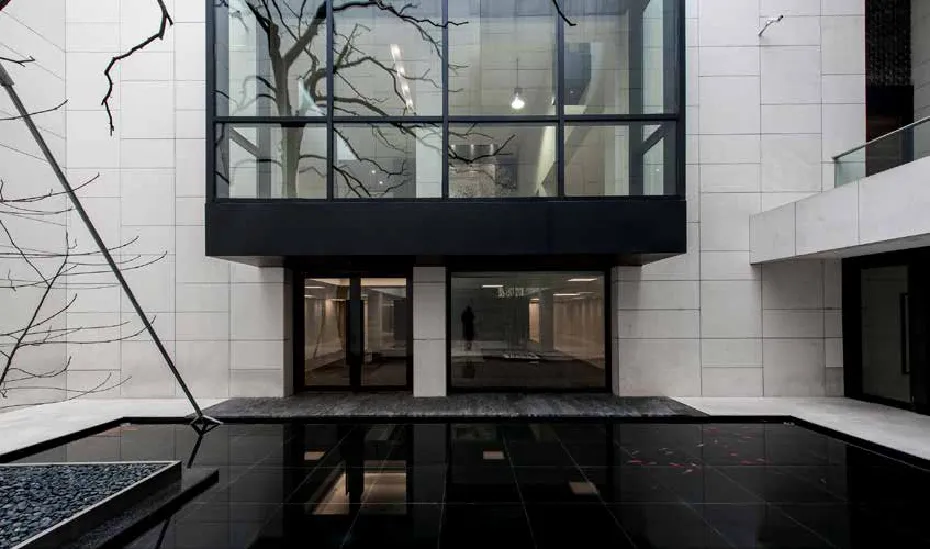
美术馆(主馆)外院——“水院”
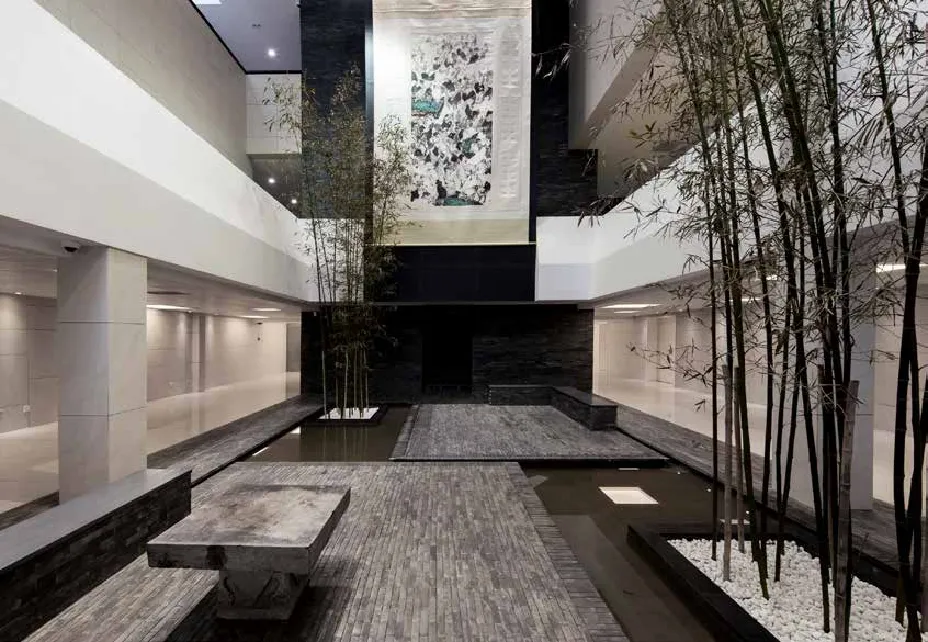
中庭内院——“竹院”

一层明展厅
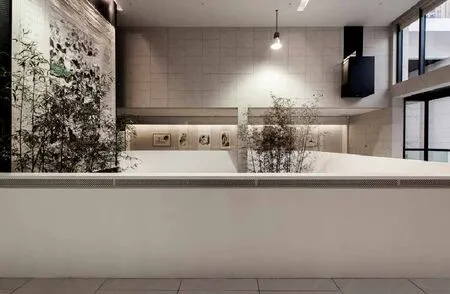
一层明展厅
是“无”亦是“有”
从外部观看,美术馆(主馆)的立面可以说是几近虚无的,仅用景观的一方水、一道墙、一片竹林,映衬出一个白色盒子的体量。
虽无立面,建筑外部广场以青色花岗岩为路,以竹为廊,以强烈的导向性将来客引向美术馆外墙的一处缺口。来访者可由此而入,见石道竹林。身伴竹香,穿林而过,而小径的远端便是美术馆(主馆)室内入口,颇有“大隐于市朝”的韵味。
是室内也是室外
山门之外的室外乃是尘世,山门之内的室外却是自给的一方禅境。
进入主馆,最先映入眼帘的是明亮的“水院”。水院中一方黑色镜面水池浮于白色空间内,池内鱼踪,池上树影,阴阳相生,动静相宜。“池上春风动白苹,池边清浅见金鳞“,身处这样一个空间之内,城市喧嚣在这一瞬已然远离,灵魂得以洗净,心也随之豁然。
主馆中间为一个半室内半室外的中庭,庭中有水池与青砖铺就的平台各自位于院中四角,水上生竹,相邻相对,互为虚实。
是光线亦是阴影
中庭的东端是明亮的“水院”,而西端各层则是黑暗的展览厅。
一墙相隔,北面是黑色的走道,南面却是明亮的过廊。黑色展厅内的白色天光,与白色水院空间中的黑色水池相互呼应,这样的关系也恰好对应了道家太极的哲学思想——一黑一白对立统一,互为阴阳;白极而黑,黑极而白的鱼眼,相互独立又相互依存。
每当太阳升起,室内中庭和黑暗展厅内的天井投射下来的光束由淡变亮,由亮变黄,而到了晚上,灯光将竹影与树影投射于地面,斑驳而迷离。光影与黑白,时间与空间相互交织,仿佛这座馆拥有了生命。
是传统也是现代
美术馆主馆的建筑都是通过现代材料及工艺塑造,游走于馆内,人却可以感受到由抽象化的巷、山门、甬道、厅、廊、榭、阶梯等这一连串空间所带来的传统空间气息。
设计师认为,真正对于传统的尊重,并非照搬传统,在对于这座馆的设计过程中,所有符号化与具象化的语言,都是他们想要摒弃的。对于道学思想的领悟,最终让设计师将“道”融入了现代的工艺与材料之中,实现了对传统的致敬。
是建筑亦是人生
游览罢这座“似是而非”的美术馆,你会发觉,其实人生亦如此:或黑或白,孰是孰非,往往并不如此绝对,人生之不如意十之八九,常想一二。黑与白、明与暗、动与静,都能在一瞬间发生反转。我们眼中所见,不过都是来自我们内心的选择而已。
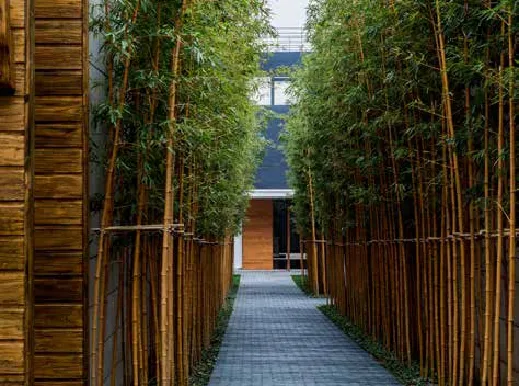
美术馆(主馆)入口甬道
It’s both Being and Nonbeing
Views from outside, the facade of “one or two” gallery is nearly nothing, the building is just a white box set of by a square of water, a wall and a piece of bamboo forest.
Although it seems nothing on the facade, the dark granites used as road on the entrance square and the bamboo forest designed as corridor still give visitors a strong guidance to the entrance. Visitors can go into the gap on the wall and then fnd a path with bamboo forest.Going through the forest with the smelling of bamboos, following the path to the entrance of gallery, it express the meaning of “The great reclusion”.
It’s both indoor and outdoor
The outdoor space outside the front gate represents the “ordinary world”, while the outdoor space on the other side is the” zen space”made by the gallery.
Going inside the main gallery, the bright “water courtyard” will be seen at first. A black mirror pool “float” at the center of the white space, the fshes and the shadow of the tree make the sense of Yin and Yang, dynamic and static.Standing inside the space of outer court, the noisy of city has been far away, spirits can be cleaned and heart will be set free.
In the middle of the main gallery, there is a atrium which can be both indoor and outdoor, pools and platform made by black bricks are in the four corners of the atrium. The bamboos grow on the pools, they are on relative directions but become view of each other.
It’s both light and shadow
The bright “water courtyard”is on the east side of atrium, and the foors on the west side are dark and black exhibition rooms.
One wall separated, the north side is a dark black aisle, while the bright white corridor on the south side. The white skylight in the black exhibition room echo the black pool in the white water courtyard space.
When sun rises every day, the light which falls down on the atrium and dark exhibition room get brighter and brighter with time. At night, the lamplight cast the shadow of bamboo and trees on the ground, it is mottled and misted. The light and shadow, the black and white space, time and the space interact each other, it seems the gallery come to life.
It’s both tradition and modern
The gallery is built up by modern materials and technology, when people walking in it, they can feel the traditional culture brought by the space made by abstract alley, door, paved path, atrium, corridor, shed and stair.
The architects consider think that the real respect to tradition is not copy the tradition, all the symbolic and concrete architectural languages are the ones they want to abandon during the design process of the gallery. Through the comprehension of the Taoism, the architects finally put the “Tao” into the modern material and technology, tribute to the Chinese tradition.
It’s both architecture and life
After visiting the gallery, you will find the life is just the same as architecture, black or white, being or nonbeing, they are usually not so absolute. “The unpleasant things are eight or nine of ten in our life, but we should know we have the part of one or two.” What we see in our eyes are all come from our choice of inside heart.
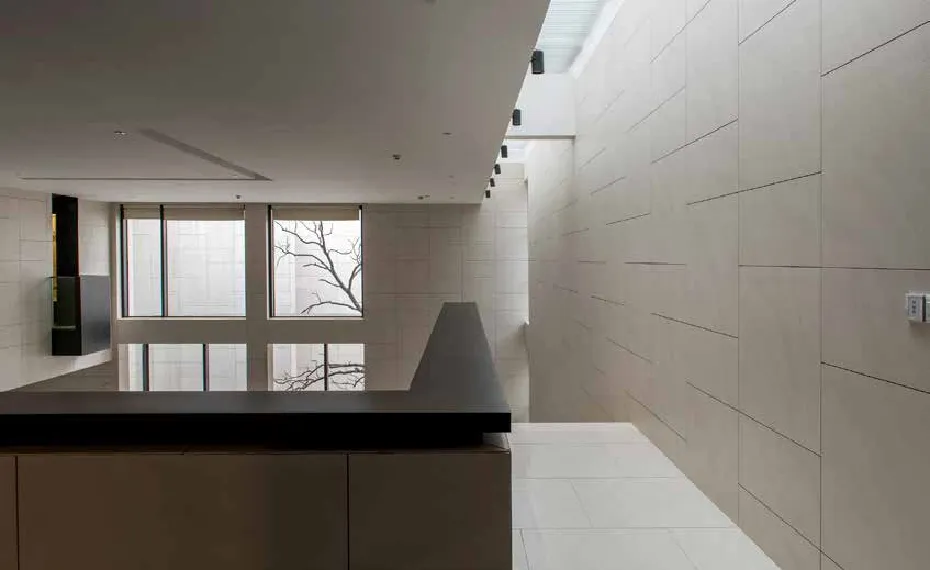
天光走廊
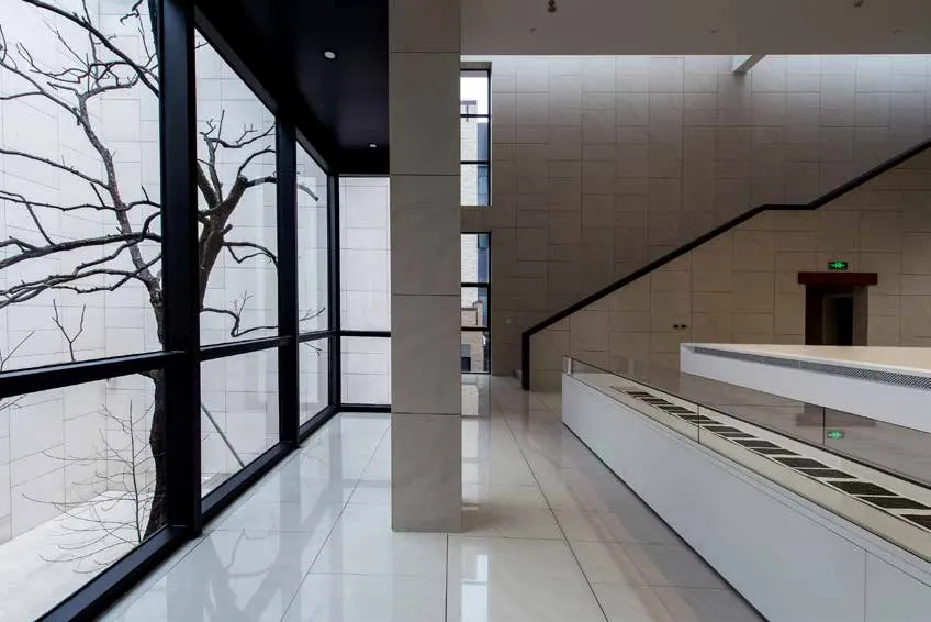
一层中庭展台

一层中庭展台
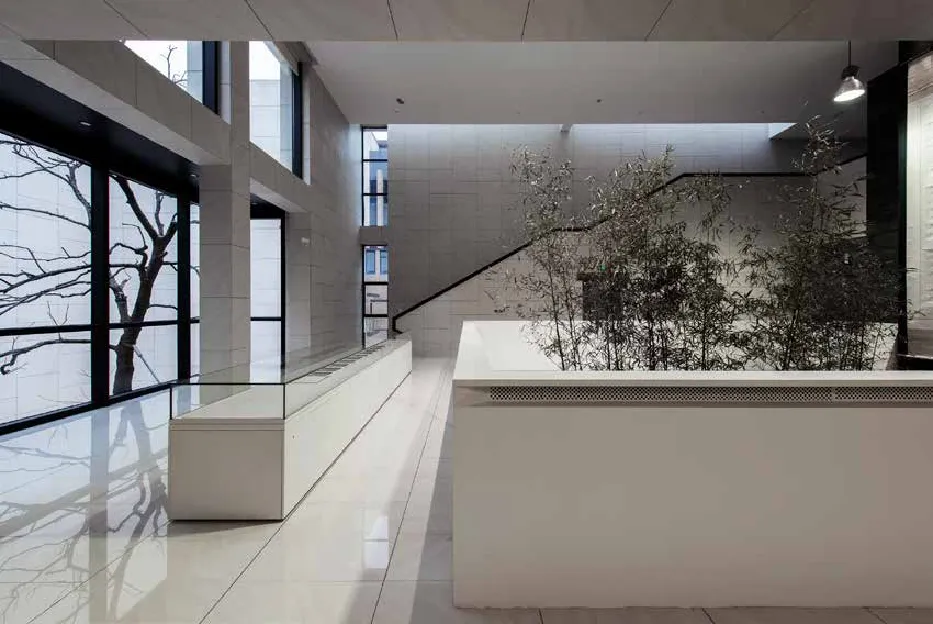
一层中庭展台
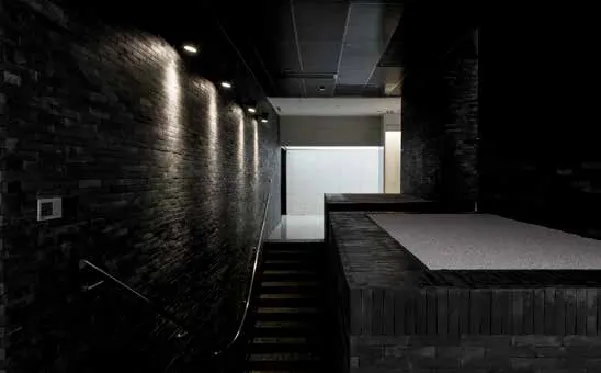
黑色走道
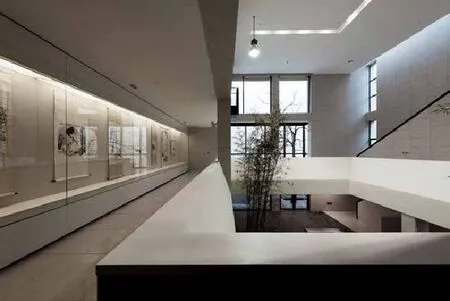
一层明展厅
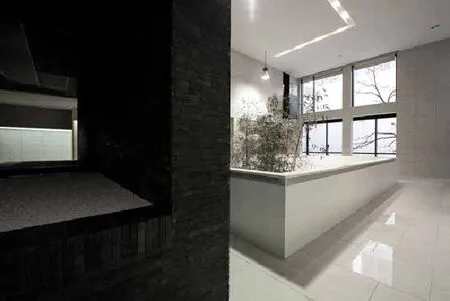
黑白空间分界
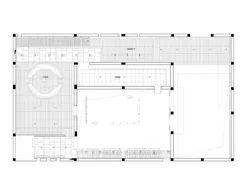
二层平面 2nd foor
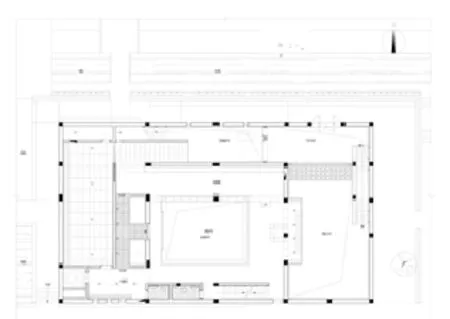
一层平面 1st foor

负一层平面 basement floor
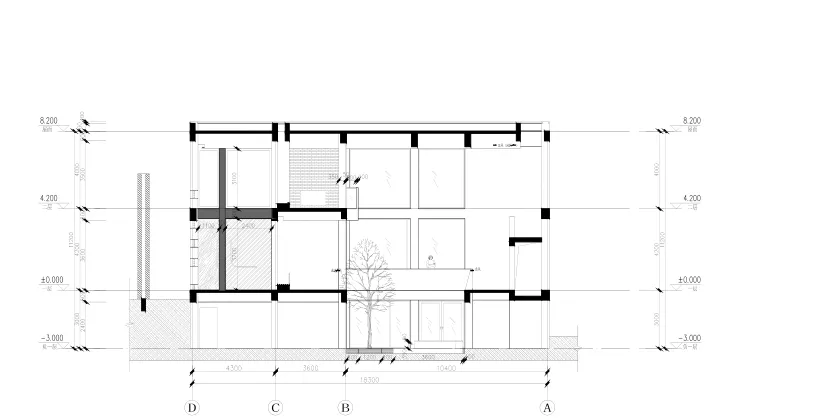
剖面1 section1
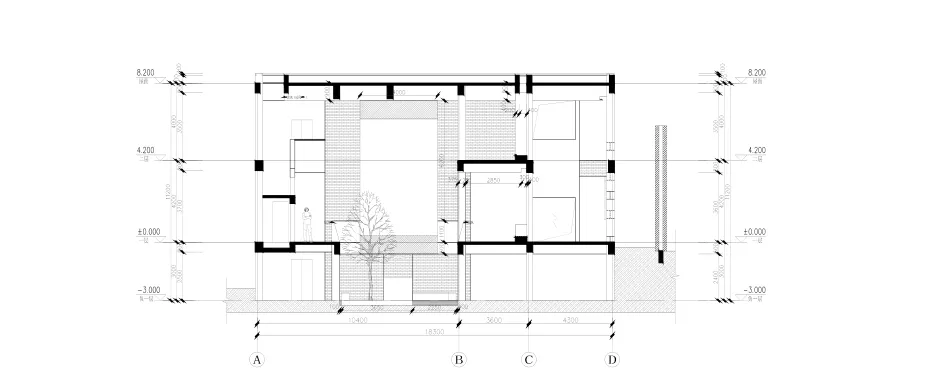
剖面2 section2
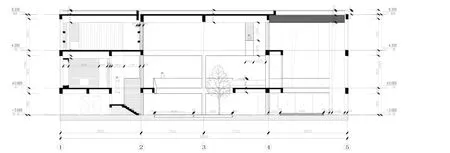
剖面3 section3
